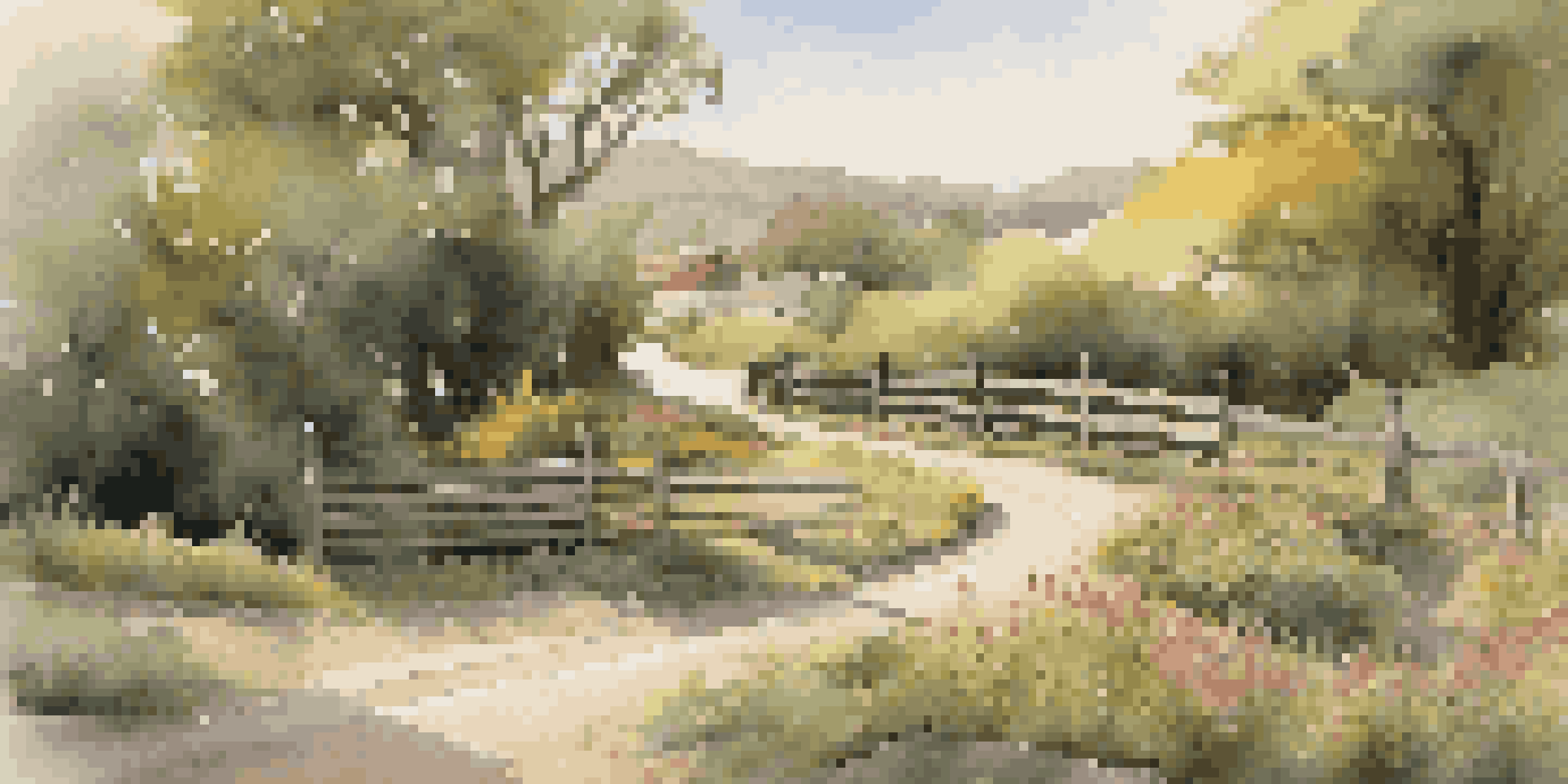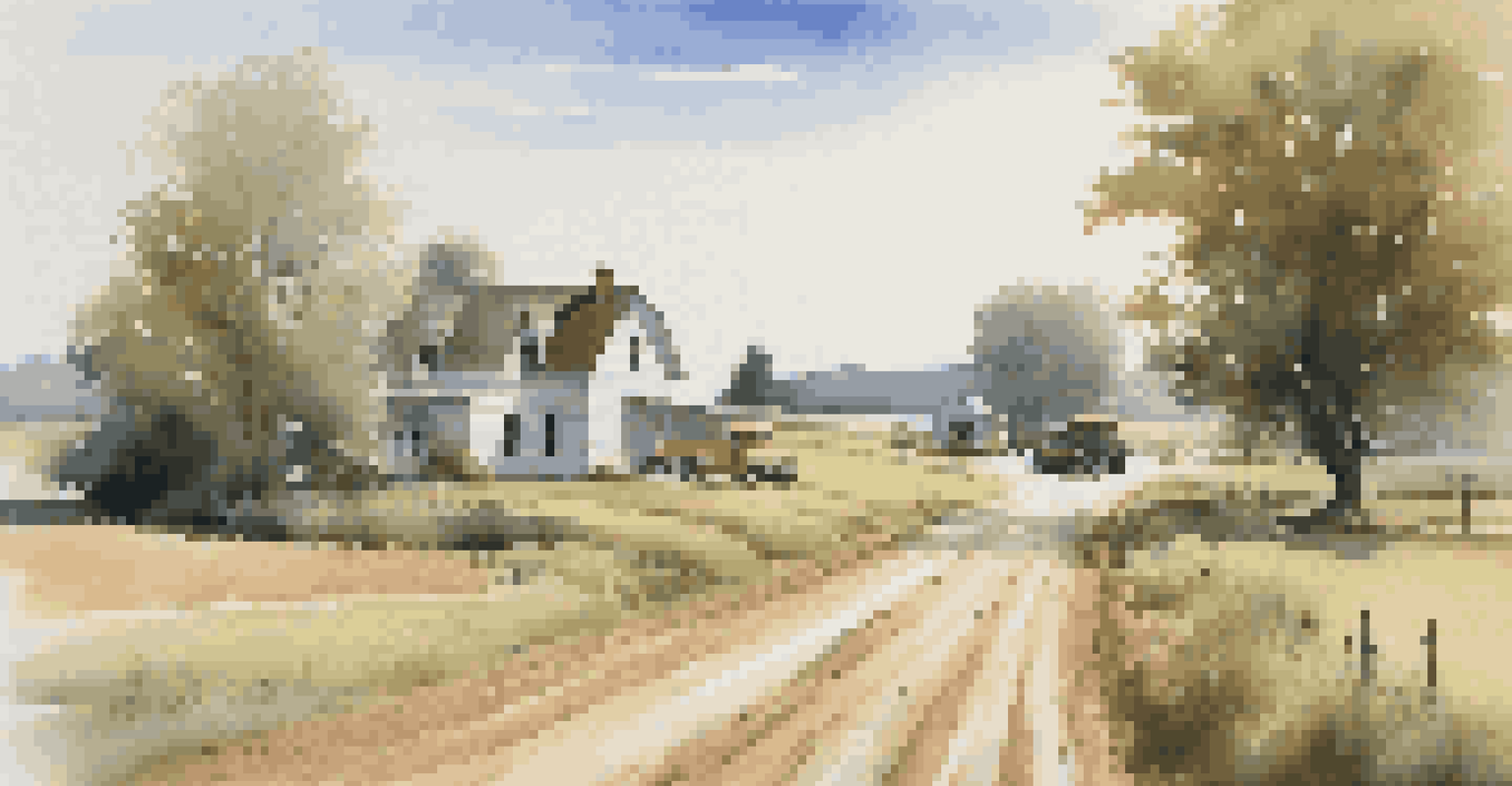Creating Realistic Roads and Vehicles for Model Scenery

Understanding the Importance of Realistic Roads
Realistic roads form the backbone of any model scenery, providing a sense of place and movement. Just like in real life, they guide the eye and can create a narrative within your landscape. Think of roads as the arteries of your model; they connect various elements and enhance the overall story you want to tell.
A road is a form of self-expression, a canvas on which we paint our journeys.
When modeling roads, consider their scale and the materials used. For instance, a dirt road looks and feels different than a paved highway. Choosing the right texture and color can add depth and authenticity, making it easy for viewers to immerse themselves in your miniature world.
Additionally, realistic roads can influence the placement and design of other scenery elements, such as buildings, trees, and vehicles. A well-placed road can lead to a bustling town scene or a quiet countryside, setting the mood for your entire model.
Choosing the Right Materials for Your Roads
The materials you choose for your model roads can greatly affect their realism. Common options include foam, wood, or specialized modeling materials like styrene sheets. Each material has its own unique properties that can help you achieve the desired look for your roads.

For instance, if you're aiming for a rough, rustic feel, materials like gravel or textured paint can replicate the look of a country lane. On the other hand, smooth, painted surfaces can simulate well-maintained highways. Think about the type of road you want to create and select materials accordingly.
Realism in Model Roads Matters
Realistic roads are essential for creating a believable narrative and enhancing the overall appearance of model scenery.
Don't forget to consider weathering techniques as well! Adding subtle wear and tear can enhance the realism of your roads, making them appear used and loved. Whether it's a few scuff marks or some faded paint, these small details can bring your model to life.
Designing Roads with Realistic Dimensions
Scale is crucial when creating roads for model scenery. If your roads are too wide or too narrow, they can throw off the entire balance of your scene. A good rule of thumb is to study real-life roads and convert those dimensions to your model's scale.
Details create the big picture.
For example, if you're working with a 1:87 scale (HO scale), a typical two-lane road should be about 1.5 inches wide. This attention to detail can make a significant difference in how realistic your model appears. It’s all about creating a believable environment that invites viewers to explore.
Remember, the dimensions of your roads should also complement the vehicles you plan to use. Matching the road size to your vehicles will ensure everything looks proportionate and cohesive. This thoughtful approach can elevate your model from simple to stunning.
Incorporating Vehicles for Added Realism
No road is complete without vehicles! Adding cars, trucks, and other modes of transportation can significantly enhance the vibrancy of your model scenery. The presence of vehicles brings a sense of life and activity, making your scene more engaging.
When selecting vehicles, consider their scale and style. Vintage cars might fit perfectly in a nostalgic town setting, while modern trucks could be more appropriate for an industrial area. This thoughtful selection can help tell a story about the environment you are creating.
Material Choices Impact Authenticity
The selection of materials for roads significantly affects their realism, influencing the texture and overall look of your model.
Additionally, think about the positioning of your vehicles. Parked cars, moving trucks, or even emergency vehicles can create dynamic scenes. By strategically placing them along your roads, you can guide the viewer’s eye and enhance the overall narrative of your model.
Adding Details: Road Signs and Markings
Road signs and markings are vital for creating a believable road environment. They not only provide context but also enhance the realism of your model. Think about the types of signs that would naturally occur in your scene, such as stop signs, speed limits, or directional signs.
When creating road markings, consider using fine paint or decals to achieve precision. These details might seem small, but they play a significant role in making your model look polished and complete. A well-marked road can also help in guiding the viewer’s journey through your scenery.
Additionally, adding elements like crosswalks, traffic lights, or even pedestrians can further enrich your scene. These details create a sense of movement and interaction, making your model come alive in ways that truly captivate the audience.
Weathering Techniques for Roads and Vehicles
Weathering is the art of making your model roads and vehicles look aged and realistic. This technique can add character and depth, reflecting years of use and exposure to the elements. Whether it’s a dusty backroad or a busy city street, weathering can transform your model scenery dramatically.
Common weathering techniques include dry brushing, washes, and the use of powders to create dirt or grime. Experimenting with these methods can lead to stunning results, giving your roads and vehicles a lifelike quality. Just like in real life, imperfections can often be more visually appealing than perfection.
Details Bring Models to Life
Incorporating elements like vehicles, road signs, and landscaping creates dynamic scenes that engage viewers and enhance storytelling.
Remember, less is often more when it comes to weathering. Start with subtle effects and gradually build up layers. This approach allows you to control the outcome and achieve a natural look that enhances the overall realism of your model.
Final Touches: Landscaping Around Your Roads
After crafting your roads and vehicles, don’t overlook the importance of landscaping. The areas surrounding your roads can enhance the overall feel of your model and create a more immersive experience. Trees, bushes, and even small structures can provide context and depth.
Consider the environment you’re depicting—urban, rural, or something in between. Each setting will dictate the type of landscaping elements you should include. For example, a city scene might feature sidewalks and streetlights, while a rural area could showcase wildflowers and fences.

Finally, remember that the transition between your roads and the landscape should feel seamless. Blending the edges with grass, dirt, or other materials can create a more cohesive appearance. Achieving this harmony can elevate your model scenery from good to truly remarkable.